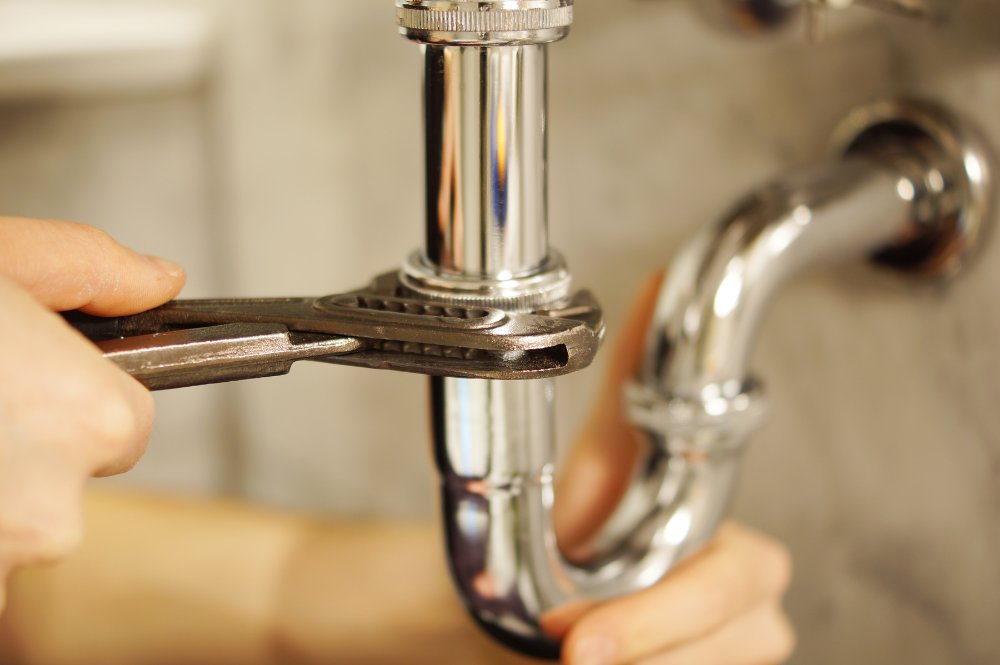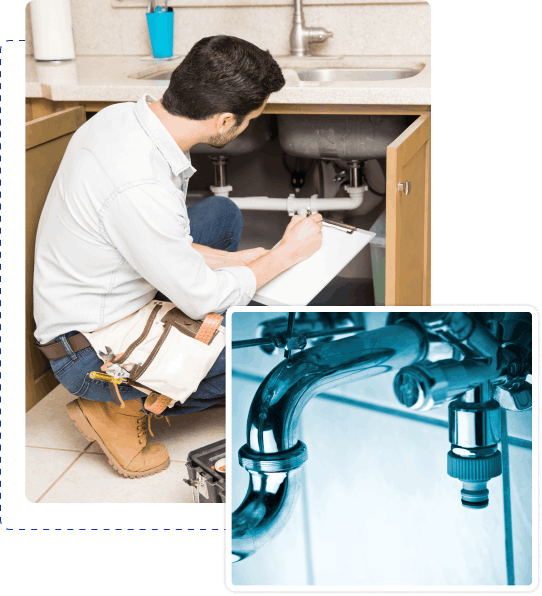Water flows effortlessly through your home, an unseen force powering daily routines—until the bills arrive, revealing a silent drain on both your wallet and the environment. The good news? A few strategic upgrades can transform your home’s plumbing into a powerhouse of efficiency. From cutting-edge tankless water heaters to intelligent leak detection, these eco-friendly plumbing solutions offer a simple yet impactful way to conserve resources while enhancing everyday comfort.
The Power of Efficiency: Why Plumbing Upgrades Matter
Most people don’t think about plumbing efficiency until there’s a problem—an unexpectedly high water bill, a sluggish water heater, or a leak wreaking havoc behind the walls. Yet, the reality is that standard plumbing fixtures and appliances often operate at far lower efficiency than modern alternatives, wasting both water and energy on a daily basis.
Why Water and Energy Use Are So Closely Linked
Water and energy are inherently connected. Every drop of hot water that flows from a faucet, showerhead, or washing machine requires energy to heat it. The U.S. Department of Energy estimates that water heating alone accounts for about 18% of a home’s total energy use—making it one of the biggest energy consumers in the household. This means that improving plumbing efficiency isn’t just about reducing water waste; it’s also about cutting down on electricity or gas usage.
Beyond individual household savings, reducing water consumption eases the strain on municipal water treatment facilities. Every gallon of water that doesn’t have to be pumped, treated, or transported reduces overall energy demand across the entire water supply chain. This is why implementing energy-saving plumbing upgrades has a ripple effect, lowering utility costs at the household level while benefiting the environment on a larger scale.
Small Changes, Big Impact
Many homeowners assume that making a home more efficient requires a major overhaul, but even small modifications can lead to noticeable savings. A few adjustments that can yield significant benefits include:
- Replacing outdated plumbing fixtures with WaterSense-certified faucets and showerheads.
- Installing low-flow toilets that use significantly less water per flush.
- Upgrading to a tankless water heater to eliminate standby heat loss.
- Adding pipe insulation to keep hot water hotter for longer, reducing the need for reheating.
The cumulative impact of these upgrades is substantial. Even just swapping out one inefficient fixture for an eco-friendly plumbing solution can result in thousands of gallons of water saved per year, while upgrading an entire home’s plumbing system can slash water use by 30% or more.
Efficiency isn’t just a trend—it’s a necessary shift in how homes operate. By making targeted upgrades, homeowners can future-proof their plumbing, lower monthly costs, and contribute to a more sustainable world.
Smart Solutions for Water Conservation
Low-Flow Toilets: Less Waste, More Savings
Flushing away money? Traditional toilets guzzle up to seven gallons per flush. Compare that to modern low-flow models, which use as little as 1.28 gallons—without sacrificing performance. Dual-flush options take it a step further, offering a choice between a partial or full flush, tailoring water usage to need. Over time, the savings compound, trimming water bills while significantly reducing household consumption.
Beyond individual savings, the impact of widespread adoption of low-flow toilets is staggering. If every household in the U.S. replaced inefficient toilets with water-saving models, the country could save billions of gallons of water annually. This means lower water treatment costs for municipalities and less strain on freshwater supplies.
Energy-Saving Faucets and Showerheads: Innovation in Every Drop
Drips may seem harmless, but a single inefficient faucet can waste thousands of gallons annually. Enter high-efficiency fixtures. Aerators infuse water with air, maintaining pressure while using far less water. WaterSense-certified showerheads bring spa-like comfort without excess flow, proving that luxury and sustainability can coexist.
Upgrading to energy-saving faucets and showerheads can cut household water use by 30% or more without any noticeable difference in daily routines. Some models even feature temperature and flow control technology, automatically adjusting pressure based on need. This not only conserves water but also reduces energy demand by limiting the amount of hot water used, lowering energy bills in the process.
Hot Water Without the Waste
Tankless Water Heaters: Heat on Demand
Traditional water heaters cycle endlessly, keeping water hot even when not in use. Tankless models rewrite the rules, heating water only when needed. This on-demand system slashes standby energy loss, delivering instant hot water without unnecessary waste. Though the initial investment is higher, the long-term payoff in energy savings is undeniable.
Pipe Insulation: Keeping Heat Where It Belongs
Even the most efficient water heater loses effectiveness if heat escapes before the water reaches its destination. Uninsulated hot water pipes can lose up to 4°F in temperature before the water even reaches a faucet, forcing homeowners to let the tap run longer while waiting for the water to heat up—wasting both water and energy.
How Pipe Insulation Works
Pipe insulation wraps around hot water pipes to reduce heat loss, keeping water warmer as it moves through the system. This means:
- Hot water reaches faucets and showers faster, reducing wasted water.
- The water heater doesn’t have to work as hard to maintain temperature, cutting down on energy use.
- Pipes are protected from freezing in winter, reducing the risk of costly burst pipes.
Installing pipe insulation is an inexpensive yet highly effective way to improve efficient home plumbing. Foam or fiberglass insulation sleeves are easy to apply and can result in annual energy savings of 3-4%, which adds up over time.
Leak Prevention: Catching Waste Before It Starts
Smart Leak Detection Systems: Silent Guardians of Efficiency
Leaks are often silent but costly, wasting thousands of gallons of water before homeowners even notice. Even a slow drip from a leaky faucet can waste over 3,000 gallons per year, while a hidden pipe leak can result in tens of thousands of gallons lost—without any obvious signs of damage until it’s too late.
Smart leak detection systems prevent these costly losses by continuously monitoring water flow and pressure. These devices, which integrate with smart home systems, send alerts when they detect abnormal water usage. Many models even have automatic shutoff features, stopping leaks before they escalate into major problems.
The Cost of Inaction: How Leaks Drain Your Wallet
Beyond water waste, undetected leaks can cause structural damage, mold growth, and increased repair costs. According to the Environmental Protection Agency, 10% of homes have leaks that waste 90 gallons or more per day. Over time, this can lead to excessive water bills and expensive home repairs.
Proactive homeowners can save hundreds of dollars per year just by installing leak detection systems. Many insurance providers even offer discounts for homes equipped with these devices, recognizing their role in preventing catastrophic damage.
Recycling Water for Maximum Efficiency
Greywater Recycling Systems: Repurposing Every Drop
Water doesn’t have to be single-use. Greywater systems capture water from sinks, showers, and washing machines, filtering it for reuse in irrigation or toilet flushing. This eco-friendly plumbing solution dramatically reduces household consumption while promoting sustainability. Installation complexity varies, but the impact on water conservation is undeniable.
In a typical household, up to 60% of wastewater can be repurposed through greywater recycling. This means instead of sending all used water down the drain, a home can reuse a significant portion for landscaping, flushing toilets, or even washing outdoor surfaces.
How Greywater Systems Work
Greywater recycling operates through a relatively simple system. After water is used in sinks, showers, or laundry machines, it is diverted through a filtration process that removes debris and contaminants. Once filtered, the water is stored in a separate tank and can be repurposed for non-drinking purposes.
Some advanced greywater systems integrate with smart home technology, automatically determining how much water to recycle based on household usage. These systems can adjust flow rates to match landscaping needs, ensuring plants receive the right amount of moisture without overwatering.
Is Greywater Safe?
Many homeowners wonder whether reusing water is hygienic. Greywater is different from blackwater (sewage) because it doesn’t contain human waste or harmful bacteria. When properly filtered and used for appropriate applications, it is completely safe. In fact, many cities and states encourage greywater recycling as part of sustainable building initiatives.
The Environmental Impact of Greywater Recycling
Greywater recycling reduces dependence on municipal water supplies, easing the burden on infrastructure and lowering demand during droughts. In arid regions, these systems are particularly valuable, allowing homeowners to maintain lush landscapes without excessive water use. By adopting greywater solutions, households can cut their total water consumption by up to 40%, making a significant difference in conservation efforts.
Img alt text: A man in a blue jacket efficiently fixing a water heater, showcasing effective home plumbing skills.
A Look at the Numbers: Cost and Environmental Impact
Energy-saving plumbing upgrades don’t just reduce monthly bills—they create lasting environmental benefits. Consider these statistics:
- A low-flow toilet can save up to 13,000 gallons of water per year for a family of four.
- Tankless water heaters are 24-34% more energy efficient than traditional storage models.
- Smart leak detection can prevent up to 10,000 gallons of wasted water annually from undetected leaks.
Beyond savings, efficient home plumbing reduces strain on municipal water systems, lowering demand and helping communities manage resources more effectively. Some upgrades even qualify for rebates, making the switch even more cost-effective.
Take the Next Step Toward Efficiency
Small changes add up. Whether swapping out old fixtures or investing in high-tech solutions, energy-saving plumbing upgrades transform how homes use water—leading to lower bills, increased efficiency, and a reduced environmental footprint.
Ready to upgrade? Ultimate Plumbing specializes in optimizing home plumbing for maximum efficiency. Contact us today and start saving water, energy, and money with the right solutions for your home.
Frequently Asked Questions
Are energy-saving plumbing upgrades expensive?
While some upgrades require an initial investment, the long-term savings far outweigh the costs. Many states offer rebates or tax incentives, making eco-friendly plumbing solutions even more affordable.
Do low-flow fixtures reduce water pressure?
Not at all. Modern low-flow faucets and showerheads are designed to maintain strong pressure while using less water, thanks to aerators and optimized flow designs.
How much can I save with a tankless water heater?
On average, tankless water heaters use 24-34% less energy than traditional models, leading to noticeable reductions in utility bills over time.
Are there rebates available for energy-efficient plumbing upgrades?
Yes! Many local and federal programs offer incentives for installing efficient home plumbing solutions. Check with your utility provider or visit government websites to explore available options.
What is the easiest way to start saving water at home?
A simple and cost-effective first step is installing faucet aerators and low-flow showerheads. These upgrades are inexpensive, easy to install, and instantly reduce water waste.
How does a greywater recycling system work?
Greywater systems collect used water from sinks, showers, and laundry, filter it, and redirect it for non-potable uses like irrigation or toilet flushing. This reduces overall water consumption and promotes sustainable living.




